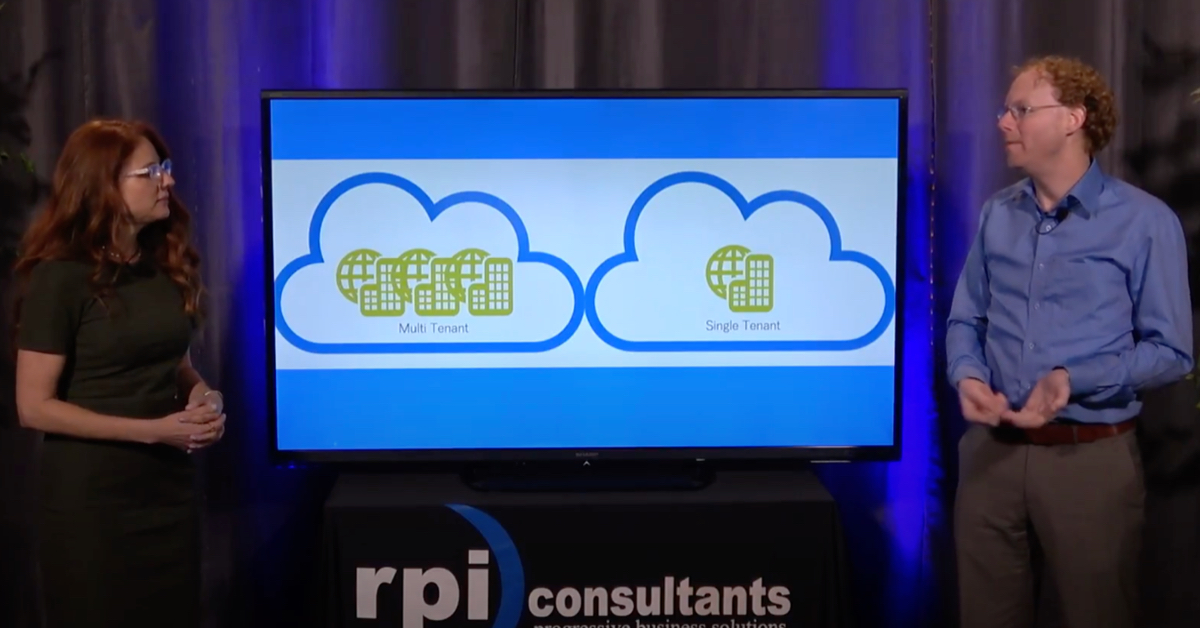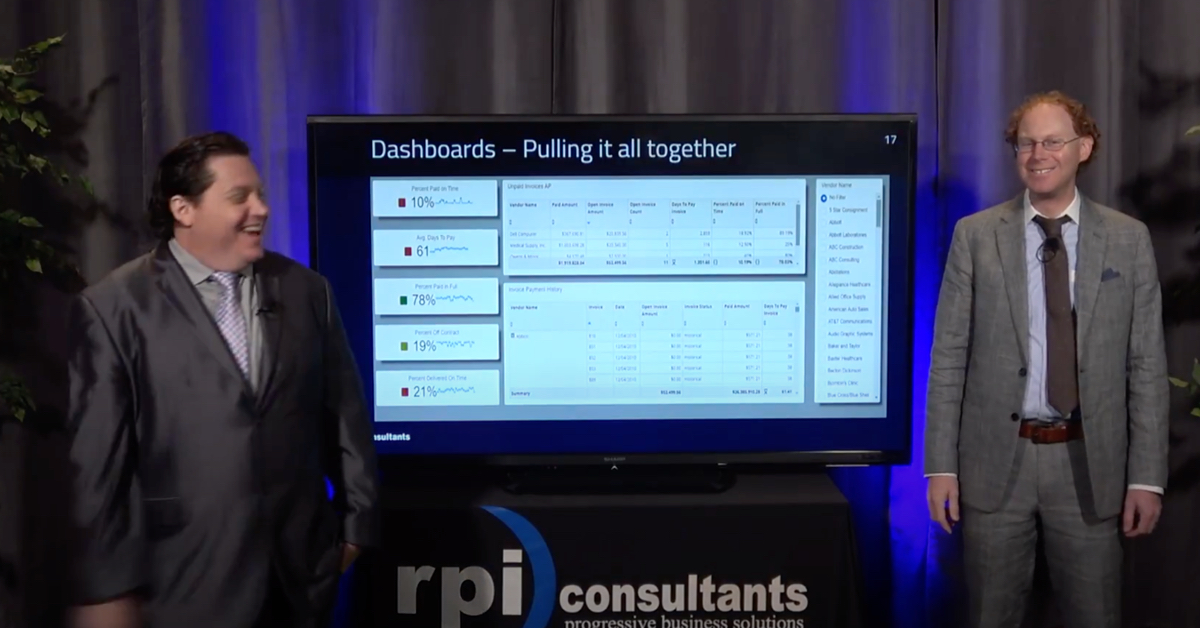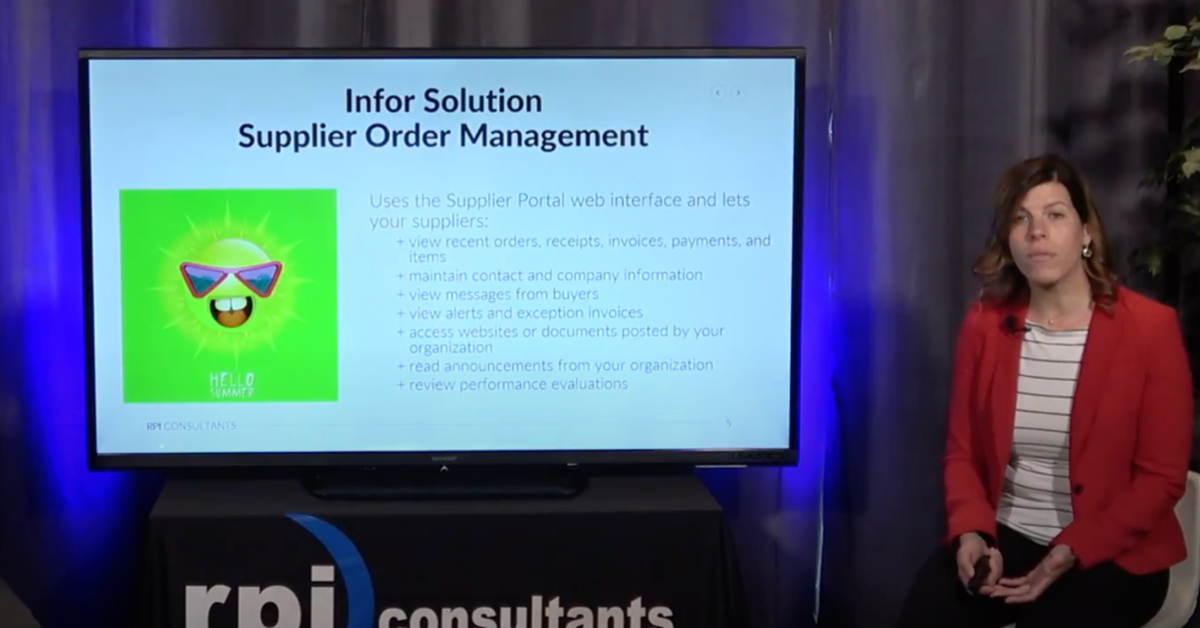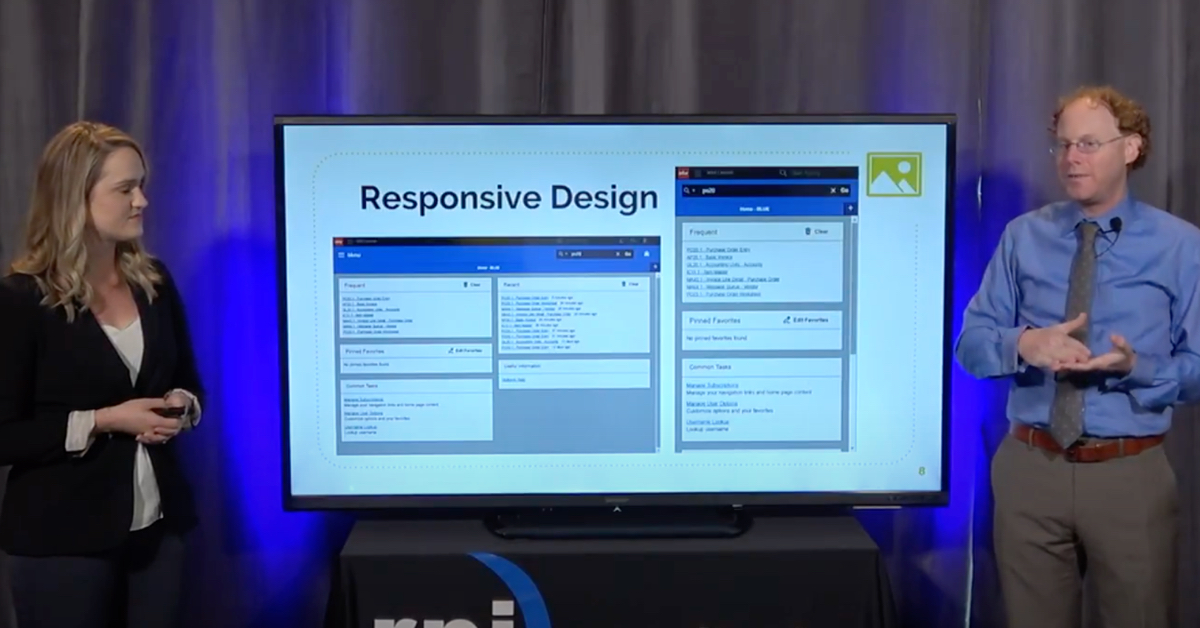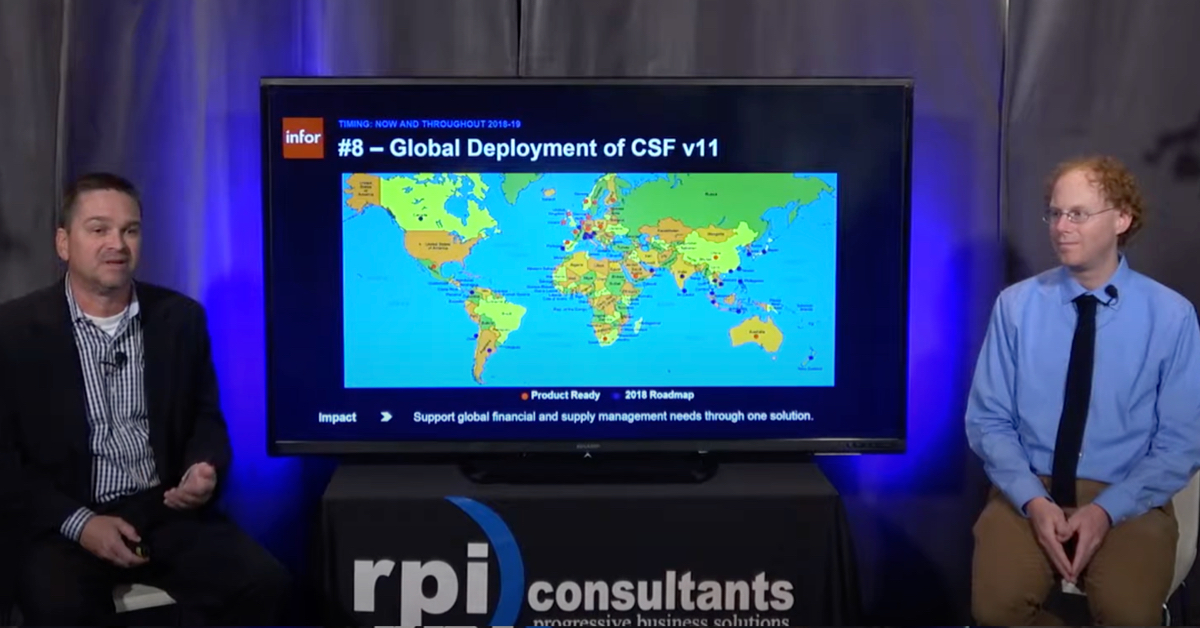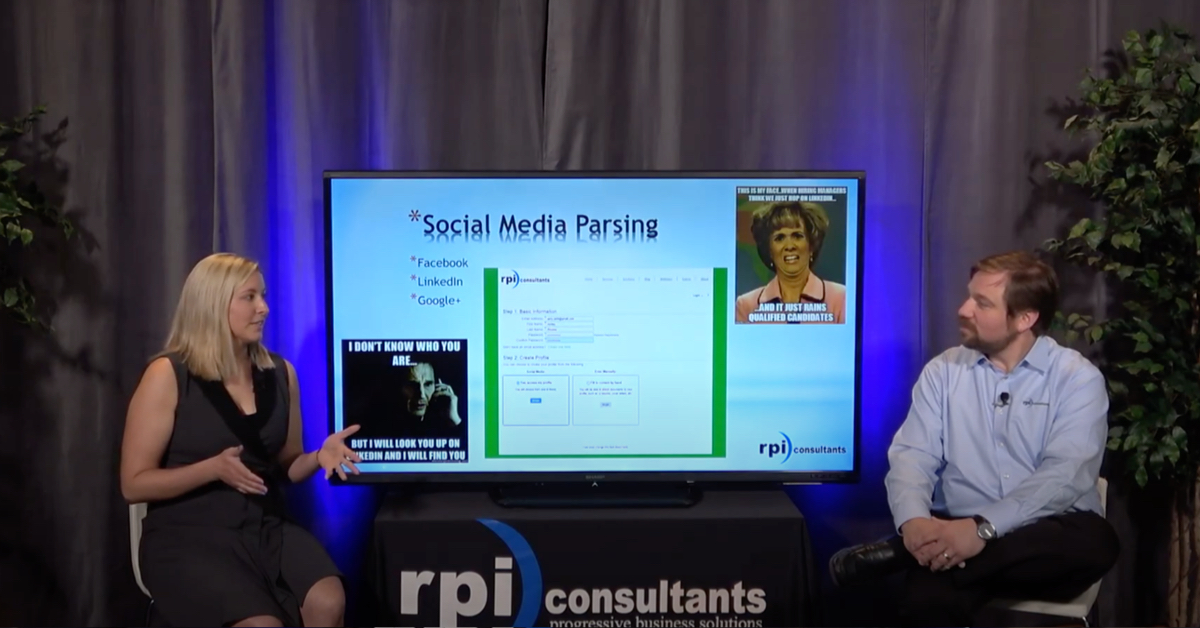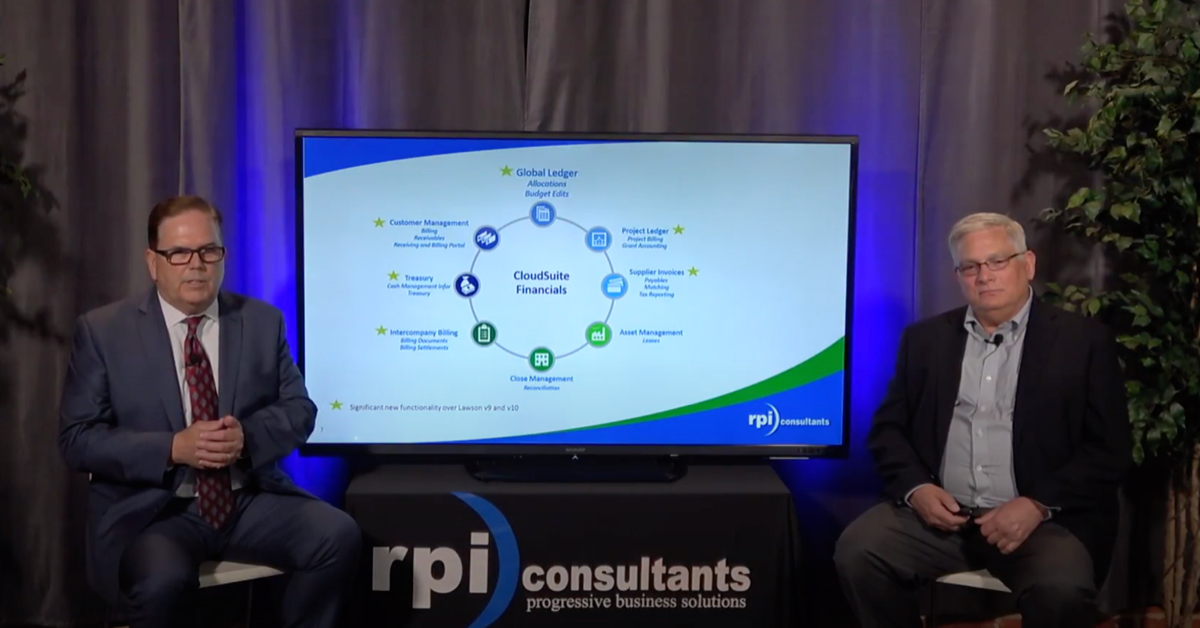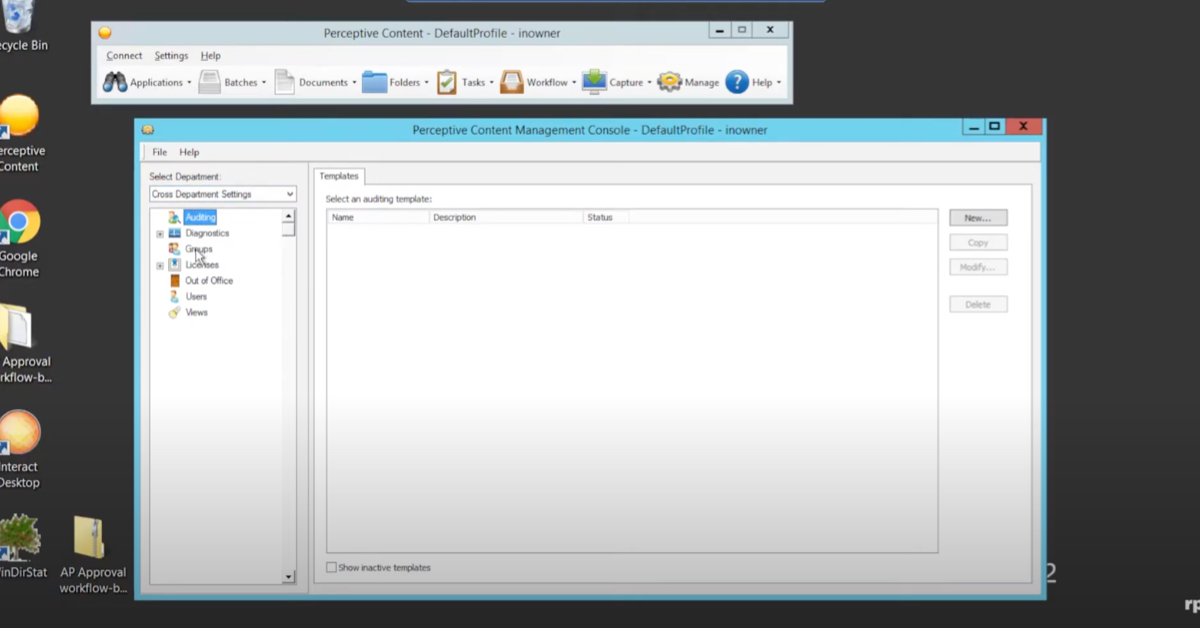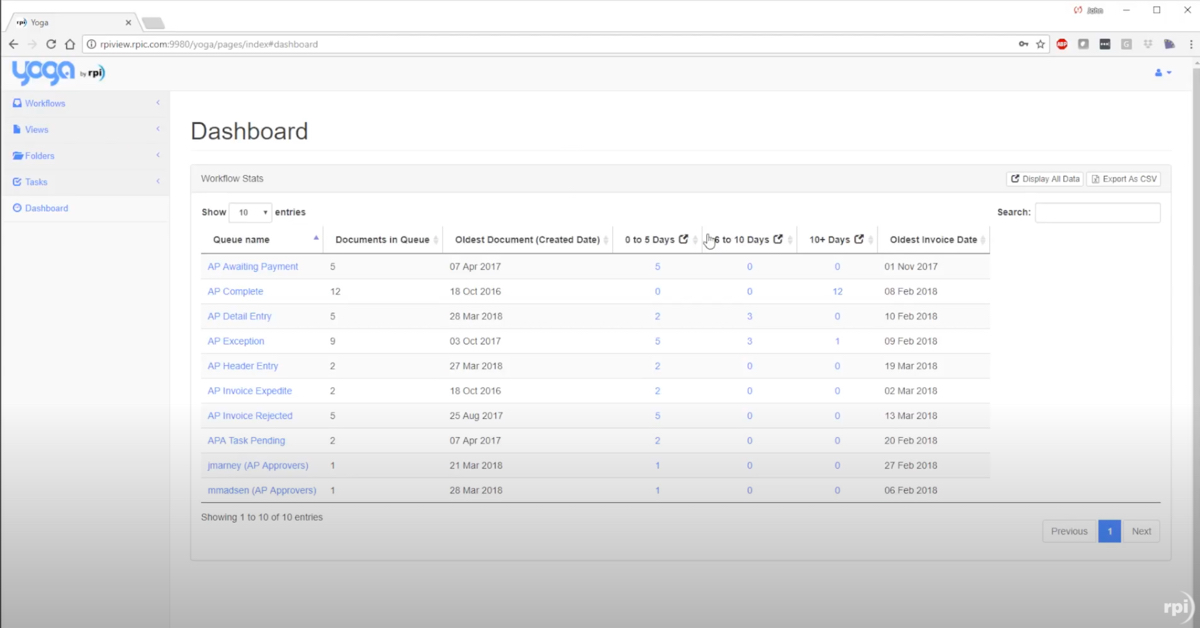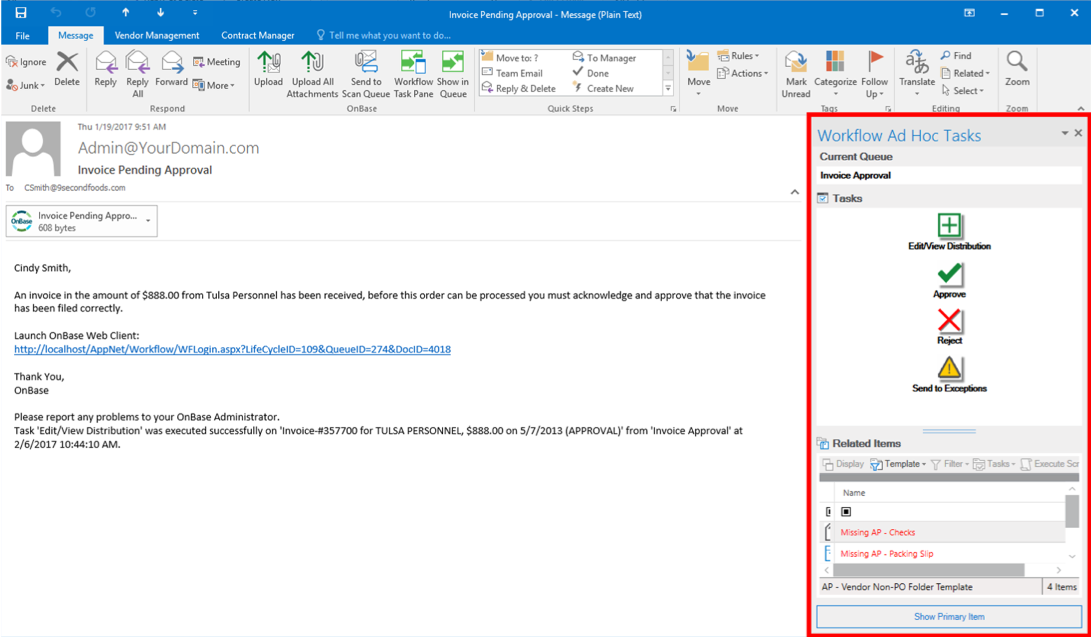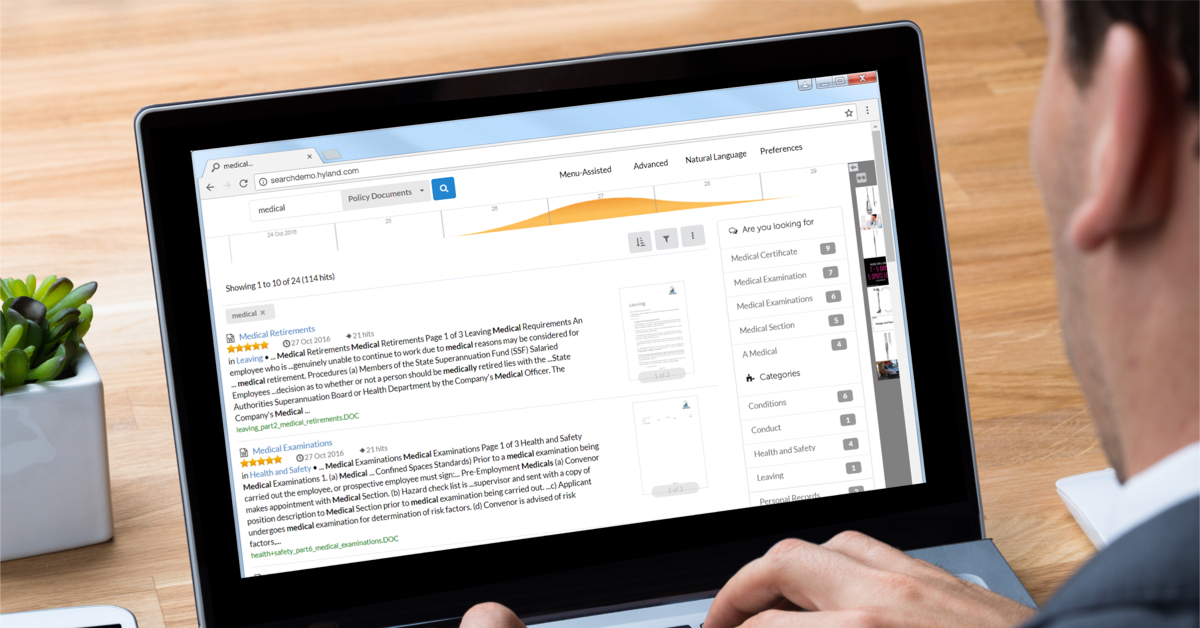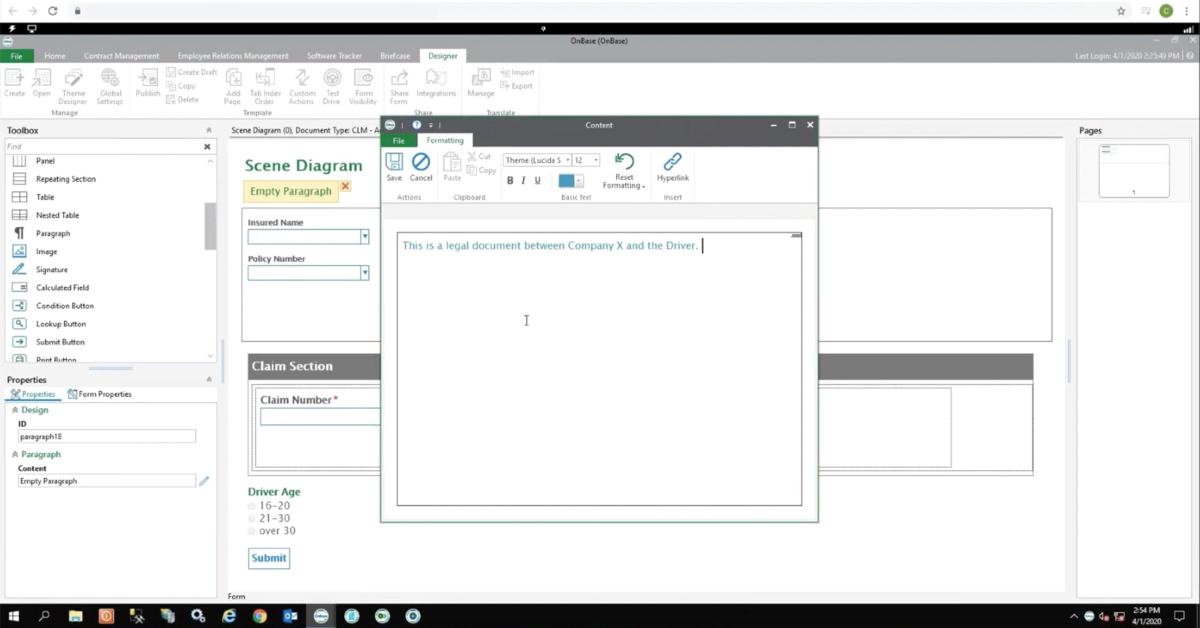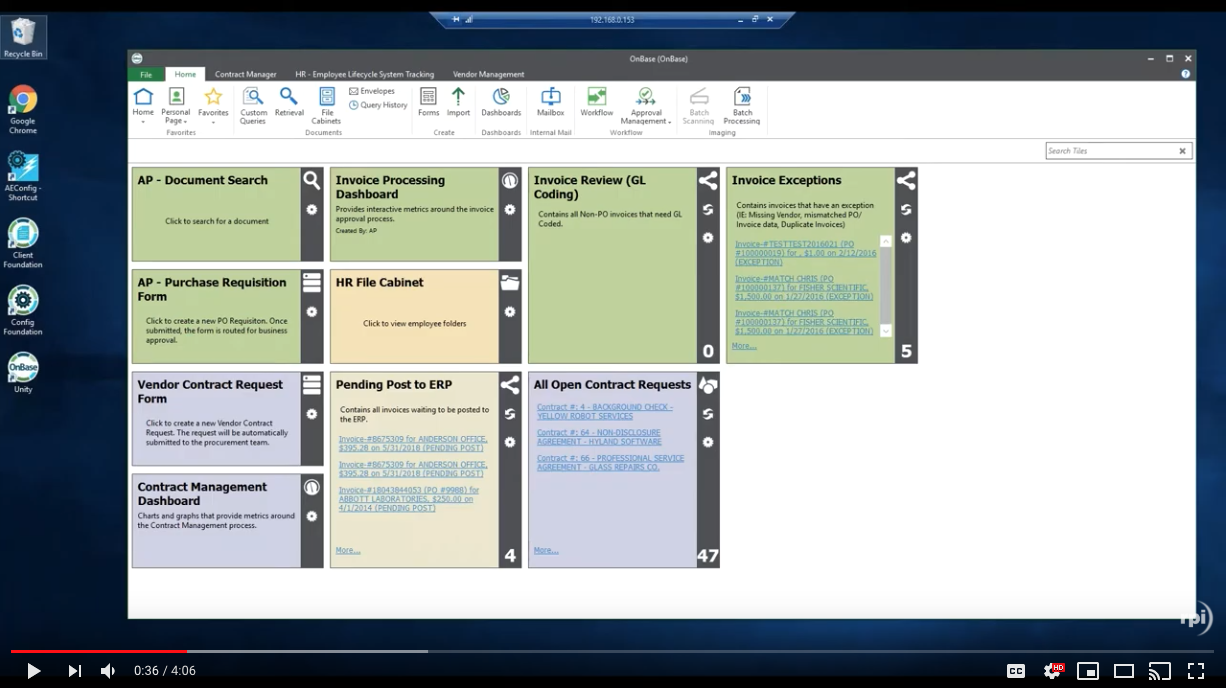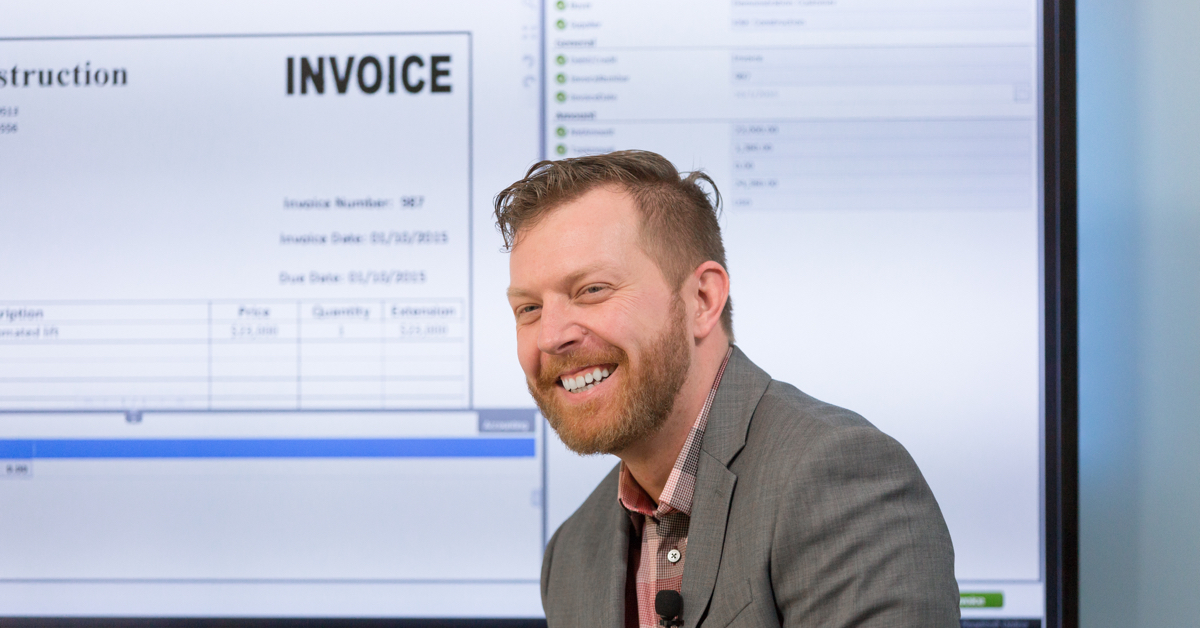John Marney:
This is Alex Lindsay, a Senior Solution Architect on our team.
Alex Lindsey:
Welcome.
John Marney:
And we are going to be talking about Perceptive Intelligent Capture reporting, or Visibility. First, just a little bit of background information about RPI. We have been working with Perceptive and Kofax products for around 16 years. Currently, this team has around 15 members, but we’re growing rapidly. The remainder of RPI Consultants focuses on Infor Lawson consulting. That encompasses around 60 members around the country. Our headquarters are in Baltimore, and we currently have offices in Tampa and Kansas City, Kansas City, of course, being where we are and where the imaging team is based out of.
What do we do? What does the imaging team do? For Perceptive Content, and Kofax, and Intelligent Capture, and this entire suite of products, we do eForm and iScript development. This is for both new implementations and enhancements. We do similar … We do workflow designs and redesigns. As many of you may be familiar with right now, we do upgrades as the Perceptive 6.7 reaches its end of life. There’s a lot of that going on right now. We also do health checks, security audits, system to system, or legacy system migrations, and we support Clinical and HL7 implementations.
One plug real quick. Please come see us at our booth at Inspire in Nashville. We are platinum sponsors, so we’re going to have a big space. If you’d like to schedule some time to meet with us and discuss this or any other topic, feel free to schedule some time at rpic.com/inspire.
Let’s get to the meat and potatoes.
Alex Lindsey:
Sure. A lot of you may not know about the Visibility reporting tool. Visibility is what we call the Intelligent Capture reporting tool in and of itself. You may or may not own it. Implementing Intelligent Capture, particularly with Content, can be quite a cumbersome project. Sometimes those highlights of the products that you have may or may not be covered with you guys.
We’re here to help you find out if you have it and how you guys can essentially use it. If you own it, we’ll help you find out if that is the case for you. Or if you don’t own it, we can assist with a few database look-ups, and queries, and things like that, to pull a lot of that information and extraction data from the Intelligent Capture engine to help you guys understand what your data extraction is.
A few things to note about the Intelligent Capture reporting, or Visibility, as we’ll call it from here on out, is that it runs on IIS. If you’re not sure if you have it, and you may have it, you can check your Business Insight server. If you have Perceptive content, a lot of times, we’ll put that Visibility software on the Business Insight server itself. If it’s not there, then it’s probably on its own remote agent server.
A lot of the reports that you can run with Intelligent Capture Visibility can be scheduled. They can be emailed, and they can be output in a lot of different formats, so CSV, PDF, Excel. I actually like Excel, a lot, to export a lot of these reports, because it allows me to do a lot of data manipulation outside of the tool itself. You can get a lot more bang for your buck with those data extracts.
John Marney:
Absolutely. What are the different … I’m sorry. Go ahead.
Alex Lindsey:
There’s several different types of reports that we have here. The accounts payable capture, custom, and verifier. The accounts payable one, if you have Intelligent Capture for Invoices module installed, you’ll definitely have this accounts payable Visibility report functionality, if you have that installed. That’s really going to give you a lot of the vendor specific and invoice specific information that can help you classify which documents came through, which fields were coming through, and things like that. I would say that most of the customers that we work with, and I have worked with in the past, have had this module installed.
The capture module itself, that essentially is more of an end-to-end reporting. There are a lot of overall statistics, and there’s a lot of data in there that you can use to make good business decisions.
Custom, if you’re watching this, and you’re not sure if you have it, or if you do have it and you just not use it, custom’s probably going to be a blank space for you there. Given that, RPI can help you guys write some custom reports, maybe do some slight adjustments to existing reports, and get something that maybe makes more sense for your end user group, if you don’t find something in these other modules.
The last is the Verifier. The Verifier module essentially shows you more of the end user, so what’s the end user doing, how many documents are they verifying on a day-to-day basis, and things like that. If you’re an accounts payable manager, you may find that extremely interesting to see what your workforce is doing. We’ll hand it off to John now to talk over some of these reports that we mentioned already.
John Marney:
Yeah, thank you, Alex. Okay, so we’re going to run through three sample reports today, one from each of the modules we discussed outside of custom. We’re going to show the data that comes out of it and how that might be applicable to your business.
The first report is Vendor Snapshot Statistics to just go over a snapshot of your vendors for invoices and your Intelligent Capture. The second is Extraction Statistics by Date, and the third is Documents Verified by Date by User to go over a little bit of individual user performance in Verifier.
The first report is Vendor Snapshot Statistics. To access this, when you first log into Visibility, it’s probably going to look like a pretty clean screen, not really even any buttons. If you mouse over the left side of the screen, you’ll see this navigation bar pull up. It has a navigation button, reports, data model, favorites, home. If you click reports, and select the accounts payable bucket of reports, it will continue to expand to the right.
What we’re going to run is this PIC Vendor Snapshot Statistics. How we run it is a quick run with default option. It’s going to give you another prompt, and it’s going to take you to a page with additional prompts, where you can choose to filter it by a certain date range, use certain vendors, certain companies, internal companies. I would say for the first time you run it, just use all the defaults, so you can get a really broad look at your business. This report will show you a lot of information on just how well certain vendors are getting processed through Intelligent Capture. What does that data look like?
On this screen, what we have is an Excel output of the data. It’ll actually show up in Visibility and has a few more options for output, but just for the sake of demonstration to fit it on the screen, I brought it into Excel.
Let’s take a look at what exactly we’ve got here. Moving from left to right, obviously the first column is vendor name. The names have been replaced with letters for this demonstration. The second column is total number of documents that have moved through in that time period. When I ran this report, I chose 30 days, which is the default. Vendor A had 11,630 documents move through in the last 30 days. Third column is number of fields. This is not an extremely significant column, unless you’ve done a lot of customization to your Intelligent Capture. Out of the box, it will have a certain number of fields configured, and that will change, basically only depending on whether you’re doing header only or header and line item. This environment, it was header only.
The next column is where we really get into the very useful information. The percent verified is a percentage of fields that had to be verified for any given invoice. For Vendor A, 9% of fields had to be verified. However, the percent correct is how many it actually successfully extracted. Even though it may have extracted it correctly and not had the confidence level to push it through, like it can extract a date and not be sure that it extracted the correct date, the percent correct means that it got it. It just made have made the user verify that it got it. Ninety-five percent correct, those levels are going to be pretty tight.
However, you see down at the bottom, the report is automatically color coded when the levels start to dip to concerning levels. Sixty-five percent of fields being extracted correctly is fairly poor, so Vendor R, we probably need to look at what’s going on with them, the format of their invoices. That’s a decent candidate for maybe a learn set to templatize exactly what that vendor’s invoice looks like.
Alex Lindsey:
It may be worth it, too, to just find out what’s the quality of the image coming in right now. Are you scanning it in? Is it coming in through email? Or is a mom-and-pop shop, for instance, just sending, and scanning in or emailing in a carbon copy. Those obviously have effects on these numbers, as well.
John Marney:
Absolutely. The next column is percent not on dock. This is also not fairly significant, reason being is because, again, out of the box, there a number of fields configured, and you don’t necessarily use all of them. There’s always going to be a value here. If it started to peak and get really high, that means that it really is missing information. If a vendor is sending in invoices that you end up having to manually key PO numbers in for, for some reason, and it’s not on the invoice, that would be a problem. That would start to show up in this number.
Finally, you get the really awesome number that you might be looking for, which is STP, or straight through processing. These are the percentage of documents that were scanned in, went through the Intelligent Capture engine, and did not need to stop for verification. They were able to go on to your document repository or your financial system.
Forty-eight percent for Vendor A would, at first glance, look to be a pretty good rate. If you go down the list, you’ll see that there are some higher, 86%, and 84%, which is amazing. But you have to stop and start to extrapolate what this data’s really telling you. Forty-eight percent is a decent rate, but considering they are our highest volume vendor for this time period, and by a significant margin, we probably want to start addressing exactly why that is that we’re not getting a higher extraction rate, or straight through processing rate, for this vendor.
This information can prompt you to go look up those invoice images and see, are we getting different formats for this vendor? If so, maybe we need to be looking at a learn set, or some code customization to help that extraction. Maybe it is document quality, like Alex mentioned, because they could be coming from different sources, being that this might be a very large vendor. Additionally, it could be that the data is not able to be validated properly. Maybe this vendor is having a really hard time complying with actually using the PO numbers that they’re supposed to be, so those invoices have to stop and be verified, because it can’t validate that that PO exists.
These are all reasons, and while this report can’t necessarily tell you at first glance why, in the Visibility Viewer when you run this report, you can actually click on the vendor name itself. It will expand the list of fields and show you which fields it’s having trouble extracting. I think this report breaks down extraction versus validation, but that may be a different report.
Anyhow, that’s a quick run-through of this report. This may, for those of you using the Intelligent Capture for Invoices module, this is going to be probably one of the most useful for making sure you’re really getting the bang for your buck out of this product.
Okay, next report is Extraction Statistics by Date, so this is a Capture report. This is going to show us just basic end-to-end stats. Again, in your reports or your navigation bar, you’ll select reports, select capture, and then select the Extraction Statistics by Date. Again, I would say just run it with all the default options at first. Down the road, you can narrow this down, if you need to.
Here’s what this one looks like. This is actually in the Visibility viewer. You can see along the top, again, I cropped this down for presentation purposes, but along the top, there are buttons for exporting to CSV, Excel, PDF, lots of things. I think there’s also a button for scheduling, rerun with different parameters, that kind of thing.
What are we looking at here? This is a lot simpler report. On the first column is the date. Since this is a snapshot, it’s going to say what is today, or what are the numbers for today, what are the numbers for yesterday, what are the numbers for the last seven days, what are the numbers for the last 30 days. You can see in this next column the total number of documents that came through in that time period. In the last 30 days, we had 88,000 plus documents come through. It extracted 1.5 million fields from those documents.
Here we get percent verified, so these again, are the stats on the percent that had to be verified, but it’s at a field level. Percent correct, again, it’s color coding it. Again, for the percent correct, it’s going to let you know if it dips to a concerning level. Again, percent not on dock is always going to have some value, depending on your configuration. If it spikes, that would be a cause for concern.
But here again, we get to another useful, probably one of the most useful, metrics that you’re looking for, is our straight through processing percentage. If you look at the 30-day number of 40% straight through processing, really for an implementation that’s pretty good. That can be improved upon. However, it’s interesting to see how as the time periods shrink that that number is going down. That may be because vendors that have really high extraction rates did not come in today, but it’s worth seeing that today we have a much lower number. It might be worth going back and running the previous report on just today to find out what vendors are hurting for today, where you’re not getting the best use of the product.
Okay, so that is the Extraction Statistics by Date report.
We move on to our third and final. Final report is Documents Verified by Day by User. Again, this is going to show you a little bit about the useful statistics for users, mostly just in total numbers. On your navigation bar, you’ll select reports, and the verify pool of reports. Then select extraction verified by day by user. Again, I would just run it with default prompt options so that you can get a quick understanding of what this report looks like.
This one’s fairly simple. It can show you multiple days or one day, depending on what you select. That’s your date. It will show you multiple days cascading down the report, if you select multiple. The next column is your user name. Again, this has just been scrubbed of any relevant user names, so A through M. And then your number of documents, so you’ve got your total at the top, and then the numbers for each user.
What do we see out of this? This is a really good report for day-to-day management of the users of this system. User A only verified 19 documents on 4/11. However, user E verified 234, and user K did 237. But what’s really interesting is user D verified 484 documents, which is almost double what anybody else did. We might like to give that user a raise, and we might like to give user A a talking to for only doing 19 documents.
Also interesting is that straight through processing number at the bottom. We can see that of the 4,084 that came through on 4/11, the STP number shows that 1,479 were straight through processing. That number should correlate to what we saw in the previous report for the percentage for today that went straight through. I think it was 32%.
Looks like we have a question.
Speaker 3:
Yes, we have a question around straight through processing. The question is, do you know if the straight through processing percent will be zero percent, if the configuration is set to send all documents to Verifier, or if it will show the percent that would’ve been straight through processing, if that configuration was opened up?
John Marney:
That’s a really good question. I would think that out of the box, basically what’s going to happen is that in the reporting database, it’s going to flag every time the document goes to state 550. If it went to state 550, it will probably show up as not straight through processing, regardless of what it would have done. However, there probably is another way to find that data by being able to compare the number of successfully extracted fields to the number of fields that are configured. It may just require tweaking a report to get that information. It probably exists somewhere in the database, but to answer your question specifically, I don’t think it will show what would be.
Alex Lindsey:
We’d probably have to write a query just to do those joins, essentially, to get that exact data, that number that you’re looking for.
John Marney:
Yep, good question. Anything else? Okey-doke.
Okay, so just a few more quick report descriptions by Alex.
Alex Lindsey:
Yeah, thanks, John. On top of these great reports, and these are really good reports, and once you learn how to run them, and read them, and understand them, they could be extremely useful.
Some of the other things that we can do is the Throughput Summary report, which shows the total number of documents and straight through processing over a longer period of time. You can see how the first three months after a go-live may not be so good, but after six months, nine months, 12 months, it may improve. If it hasn’t, then maybe it’s time to readjust, and get under the hood again, and have a look at ways that we can improve it.
My personal favorite is the Field Extraction by Vendor, so by a specific vendor. Cintas is a huge vendor of a lot of customers that own the Content, Intelligent Capture. They’re seeing invoices, and you can see field by field on the data that we’re extracting off of those invoices, so invoice number, invoice date, vendor ID, and address, and things like that. What we’re extracting off of that, you can see how successful each of those individual fields are. That will allow you to work with your vendors and say, “Hey, can you please not write the vendor address down here,” or maybe, “Please stop writing on the invoice altogether,” or writing the PO number, which I’ve seen a lot of, as well.
The final thing is the dashboard. That’s a great tool for when you log onto Visibility reporting, to see, get a quick snapshot of the things that are most interesting to you. If you’re an accounts payable manager with AP clerks under you, it’s probably extremely interesting and viable for you to understand the Verifier user, what your users are doing in the system. If you’re more of the administrative type that wants to control how the engine’s actually operating, you can look at more of the other statistics that are more pertinent to the extraction rates and things like that.
John Marney:
Yeah, and that Field Extraction by Vendor report, the second one on this list, is basically a deeper dive version of the first report that we showed. It just automatically breaks down every field for each vendor instead of giving you a summary.
That’s pretty much the content for the reporting presentation. We do have two more webinars that this team is giving this week. Tomorrow we’re doing Retention Policy Manager for Perceptive Content. That is at 11:00 Eastern. Then in the afternoon, we are doing Perceptive Content Tips and Tricks at 2:00 Eastern.
We’ll open it up for any additional questions. I will note real quick that for any Infor Lawson clients out there that we are doing a large series of webinars next week. You can see the high level ones and the deep dive ones at rpic.com/webinars. Then for the two webinars I mentioned for our team, you can go to rpic.com/ists-webinars.
Any questions?
Speaker 4:
Yes, thanks guys. We do have a couple here. The first one, you mentioned in the beginning that we might be a little bit unsure of whether we have this tool or not. Did I miss the point, is there an easy way to check, or is that something that’s very install-specific?
John Marney:
Yeah, that’s a great question. The license, I don’t believe, and we can definitely follow up with you on this … I don’t believe that the license is shown through the normal Intelligent Capture license pool, so I don’t think that there’s a super easy way to check. You can follow up with your account executive, or you can come to us, and we can help you find out.
Again, the best way to find out is look at any existing servers in your infrastructure. It’s not typically installed on the same server as Intelligent Capture. That’s just a best practice, so you’re looking for something, if you own Perceptive Content, like a reporting server. It’s very often installed next to Business Insight or some other MO server on your network that’s set up for Intelligent Capture. That’s something that we can certainly follow up with to find out the specific way.
Speaker 4:
Okay, and is this basically just an online inquiry reporting tool, or is there any sort of bursting or scheduling of reports that can be done? I’m sorry if I wasn’t paying attention, and you covered that.
John Marney:
No, that’s okay. Yeah, we can definitely do most of the features that are standard in most reporting products. You can schedule these reports to run with either variable timeframes or static timeframes. You can have the output in whatever format you want. Anything you can output from the viewer with Excel, or CSV, or PDF, you can have output and emailed to you, or just available for you to access in the report repository that’s on Visibility.
Speaker 4:
Okay, thanks. It doesn’t look like we have any further questions at this point. Maybe we’ll wait a few seconds here, in case somebody is typing, but any last remarks here?
John Marney:
No, again, Intelligent Capture is a really powerful tool. Like Alex said, a lot of times you get six months, 12 months down the road, and you really need to take a hard look at the statistics coming out of the system to see if you’re really maximizing its effectiveness.
I hope that this presentation has been useful. Thank you for attending, and again, this will be posted online at some point for you to view in the future.
[/vc_column_text][/vc_column][/vc_row]







